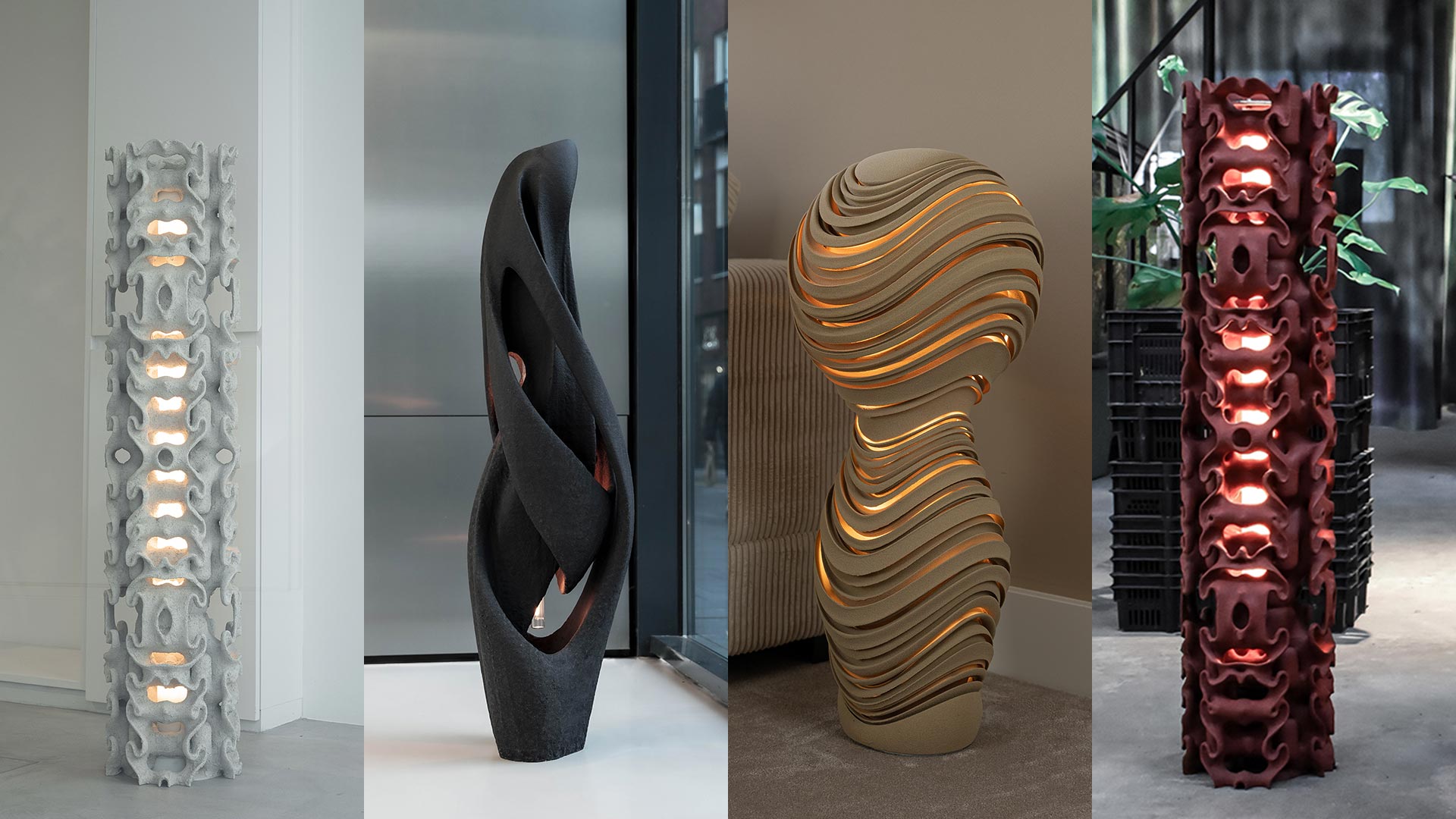What happens when designers draw inspiration from the complexities of organic structures and mimic the intricate models of nature?
The results may vary from the fluidic use of organic patterns and curves to create architecture similar to that of Zaha Hadid to research-oriented experiments explored by Neri Oxman. In that vein, inspirations from nature and biology can lead to a diverse range of creations that draw from the earth and extend to imaginations of the extraterrestrial. However, current world’s favourite translation of these influences presents itself in the language of biomimicry design. With the advent of technology, new means of manufacturing, and advanced software, the design output of biomimicry-inspired product design has transcended from concepts to realisations. As the name suggests, this design style has brought to life some intriguing forms of nature with all their complexities, detailing, and questionable characteristics.
At his Rotterdam -based practice Rollo Studio, designer Bryant Rollo is experimenting with these concepts of biomimicry to reinvent lighting design for the new era. The result of this are products that appear to have emerged straight out of the ground, resembling the wild and untamed character of organic matter. Providing observers of his art a chance to awaken their child-like imagination, these products resemble anything from the coral world to extraterrestrial life. However, what roots it back to being a part of earth is the main material used in its manufacturing—sand. The studio specialises in creating organic and contemporary lighting pieces from 3D-printed sand.
Founded in 2020, Rollo Studio is an independent design studio working with advanced digital software and cutting-edge additive manufacturing technology. Defining the evolution of the studio’s work, Rollo shares, “The core of my work revolves around embracing craft in the digital age. With a focus on material and lighting innovation, I use working techniques that merge freehand sculpting with computational software.”
He further adds, “At the heart of my philosophy is a commitment to using nature as a source of inspiration, and then combining these discoveries with modern tools and digital fabrication techniques to create a unique form language. The objective is to create designs that blur the boundaries between nature and modernity, leading to a world that is more in tune with the organic and untamed aspects of the environment. I believe that by valuing 'wildness' over the flat, smooth and straight designs that have become so common in today's world, society will be motivated to show greater respect and care for the environment. Ultimately, my work seeks to contribute to a world that is less divided from nature and more attuned to its inherent beauty and complexity.” Since its inception, the brand has launched many collection that derive from the imperfectly intriguing structures of organic matter to alien elements from the designer's imagination.
With the Orbital Collection, Rollo conceptualised an unearthly concept. The concept note for Requiem from the collection states, “It's a dark but delicate place where the earth engulfs its surroundings. A hooded figure is shown through its shadows, tightly wrapped around a light source that spreads cautiously across its surfaces. Energy and warmth are all that's left to live from, resources are minimal and the environment is hostile. Those who thrive in this landscape are disciples of technological anatomy, followers of biomorphic evolution and soldiers in the selfless ideal of codependence.” Delivering on the curious storyline of this narrative, the other products in the series, Olea and Odyssey also present themselves as souvenirs from these extra-terrestrial land, illuminating a tangible mystery.
Taking from other-worldly thoughts, for the Urban Stem Collection, the studio reimagined lighting into an array of light sculptures . The inspiration for the series draws from how erosion sculpts Tafoni sandstone. Beyond the conventional functions of lighting, Urban Stem aims to refine lighting in public spaces where it isn’t merely a source of illumination but act as a refuge and nest for flora and fauna. With the collection of lights named Oozy, Viva and Della, the collection addresses the question, “In spaces designed for and by humans, is there room for interspecies cohabitation?” In the openings, organic niches and natural form of the light sculpture, the studio envisions a home for natural life and small organisms.
The studio’s latest collection Lavora explores quartz sand as the primary material and takes shape in a fluidic repetition of curvaceous patterns and motifs. While talking about the process of crafting such intricate objects from sand, Rollo mentions, “Until recently, producing objects with this kind of geometry, at a large scale and from aggregate material, would have been near impossible. However, recent innovations have allowed these boundaries to progress and through this collection, the aim had been to stretch these limits and push them to their furthest degree.”
Talking about their wide exploration of new digital technology and cutting-edge production methods, he further adds, “My aim is to keep pushing the limits of modern technology and fabrication techniques while remaining true to my design philosophy and style. In addition, I am currently exploring new materials and techniques that allow me to create unique effects, such as using translucency to diffuse light through different layers, creating more intricate gradients.”






 Sign in with email
Sign in with email










What do you think?